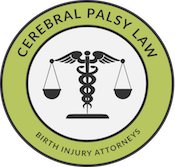Hyperstimulation and Strong Contractions
Prolonged periods of contractions and pushing during labor and delivery may result in fetal trauma, neonatal brain injuries, cerebral palsy (CP), and other permanent injuries. The cumulative effects of difficult and prolonged labor may restrict oxygen flow to the baby, inflict trauma to a newborn’s head, cause umbilical cord complications, and potentially result in injuries from dangerous labor-inducing drugs. Because these hazards often lead to such severe and lifelong cognitive and physical impairments, it is a medical professional’s duty to carefully and thoroughly follow all standards of medical care.
Did strong contractions or hyperstimulation result in your loved one’s birth injury or cerebral palsy? If you believe so, our experienced Michigan cerebral palsy lawyers encourage you to reach out for a free case review today. Call us toll-free at (888) 592-1857 or complete this contact form for a FREE evaluation of your child’s cerebral palsy case and our attorneys will help you answer your questions.
What Are Strong Contractions and Hyperstimulation?
Strong contractions are prolonged and strained periods of contractions and pushing that often result in fetal distress. Hyperstimulation is the term used for the excessive frequency and strength of the contractions, when single contractions last over two minutes, or five or more contractions take place within a ten minute time frame. Strong contractions and hyperstimulation are often triggered by size abnormalities and differences between the mother and baby, such as cephalopelvic disproportion (CPD) or macrosomia.
What Injuries Are Associated with Strong Contractions and Hyperstimulation?
The following injuries are often seen in labor and deliveries where strong contractions or hyperstimulation are present. It is the duty of physicians and nurses to appropriately monitor, diagnose and remedy any of these complications in order to minimize the risks to the mother and baby. Failure to do so may be medical negligence.
- Fetal distress causes heart rate abnormalities in the baby during delivery. Medical professionals must monitor a baby’s heart rate throughout labor and delivery to ensure that contractions are not causing unusual accelerations or decelerations. Often, an emergency C-section to deliver the baby is warranted in order to avoid HIE.
- Hypoxic ischemic encephalopathy (HIE): Also known as birth asphyxia, HIE occurs when oxygen flow is restricted to a baby’s brain and important brain tissues are destroyed.
- Umbilical cord compression: Hyperstimulation often causes umbilical cord compression and/or limits the placenta’s ability to replenish oxygen, ultimately depriving the baby’s brain of the important oxygenated blood necessary for its development.
- Head trauma: Repeated and forceful contact of a baby’s head against the mother’s pelvis may result in head trauma such as intracranial hemorrhaging.
- Uterine rupture: The pressures from excessive contractions may cause the uterine walls to tear, necessitating an emergency C-section delivery.
- Complications from labor-inducing drugs:
- Pitocin (Oxytocin): Excessive doses of Pitocin may cause contractions that are too rapid to allow time for the placenta to replenish its oxygen supply, limiting oxygen to the baby’s brain.
- Misoprostol (Cytotec): Misoprostol is administered by inserting a pill vaginally, so it is impossible to discontinue its effects if it triggers dangerous reactions in the mother or child. Risks associated with misoprostol include uterine rupture, hemorrhaging, and amniotic fluid embolism.
Legal Help for Children Affected By Strong Contractions, Hyperstimulation, and Cerebral Palsy (CP)
Unlike other law firms, the offices of Michigan Cerebral Palsy Attorneys have exclusively handled birth injury cases for over 25 years. Our team consists of experienced and highly-focused birth injury lawyers, a registered labor and delivery nurse consultant, and other medical and legal professionals. Our birth injury and cerebral palsy lawyers are committed to working closely with their clients and their clients’ families in order to fully understand the child’s legal, medical, and lifestyle needs. Find out if you have a case—contact our firm toll-free at (888) 592-1857 or fill out this online contact form.
Videos: Strong Contractions and Hyperstimulation
1. Strong Contractions and Hyperstimulation, Fetal Heart Monitoring Errors, and Medical Malpractice
As we learned throughout this page, strong contractions and hyperstimulation can lead to fetal oxygen deprivation and fetal distress. In the following video, our in-house labor and delivery nurse Andrea Shea explains the importance of fetal heart monitoring. She discusses how instances of medical malpractice surrounding fetal heart monitoring can cause hypoxic ischemic encephalopathy (HIE), cerebral palsy (CP), and other dangerous birth injuries.
2. Tachysystole, Medical Malpractice, and Birth Injuries
In this video, labor and delivery RN Andrea Shea explains tachysystole, a dangerous delivery complication in which a woman experiences too many contractions during labor. Learn more about tachysystole, Pitocin misuse, fetal oxygen deprivation, infant brain damage, and hypoxic ischemic encephalopathy (HIE) by viewing the following video.
